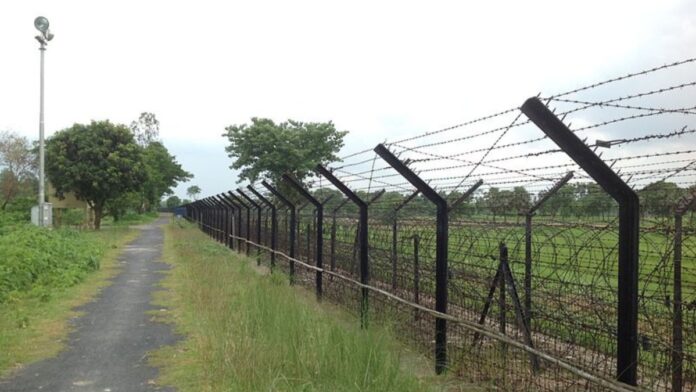In a significant move following Union Home Minister Amit Shah’s recent announcement, the Manipur government has taken the initiative to kickstart the process of constructing fencing along the Indo-Myanmar border. The Deputy Commissioner of Churachandpur district has sent letters to the Sub-Divisional Officers of Singnat and Suangdoh sub-divisions, requesting a comprehensive list of villages for land acquisition related to the erection of fencing and road construction.
Amit Shah, on January 20, declared that the central government would soon secure the India-Myanmar border with fencing, drawing a parallel with the measures taken along the Bangladesh border. This decision marks a strategic effort to restrict unauthorized movement across the border and fortify India’s security.
The move towards border fencing carries implications for the existing Free Movement Regime (FMR), which permits individuals residing in proximity to the India-Myanmar border to venture up to 16 km into each other’s territory without requiring a visa. The imminent implementation of border fencing indicates an end to the FMR, reshaping the dynamics of cross-border movement in the region.
Amit Shah emphasized the need to protect India’s border with Myanmar on par with the security measures implemented along the Bangladesh border. This announcement underlines the government’s commitment to bolstering national security and regulating the flow of individuals across international boundaries.
The decision to reconsider India’s Free Movement Regime (FMG) agreement with Myanmar adds another layer to the evolving scenario. As part of India’s Act East policy, the FMG was implemented in 2018 across states like Mizoram, Manipur, Nagaland, and Arunachal Pradesh. With the upcoming changes, there is an anticipation of a shift in the existing dynamics of cross-border movement and diplomatic relations between India and Myanmar.
The 1,643-km-long border shared by India and Myanmar traverses through several northeastern states, each with its unique socio-cultural landscape. The move towards border fencing signifies a strategic step to enhance national security, yet it also prompts a reassessment of the socio-economic and diplomatic ties between the two neighboring countries.
As Manipur takes the lead in initiating the process, the border fencing development is expected to unfold in phases across the other northeastern states. The intricacies of land acquisition, road construction, and the subsequent impact on local communities will undoubtedly be focal points in the ongoing discourse surrounding this significant geopolitical development.




